

On the occasion of a visit to my friends and fellow retired university professors, Doris and Carlos, in their residence, located in a privileged area by nature, south of the city, I was pleasantly surprised that Doris had planted and cared cautiously a series of bromeliads that immediately attracted my attention, so I asked my friend to allow me to take photos of the variety of that type of plant that swarms, together with orchids, in her gardens and that were under my watchful eye since I entered the house. I have to tell you that the land on which the apartment building, where Doris and Carlos live, is built in a place that has a high degree of rainfall, with a pleasant mountain climate, which facilitates the growth of bromeliads.
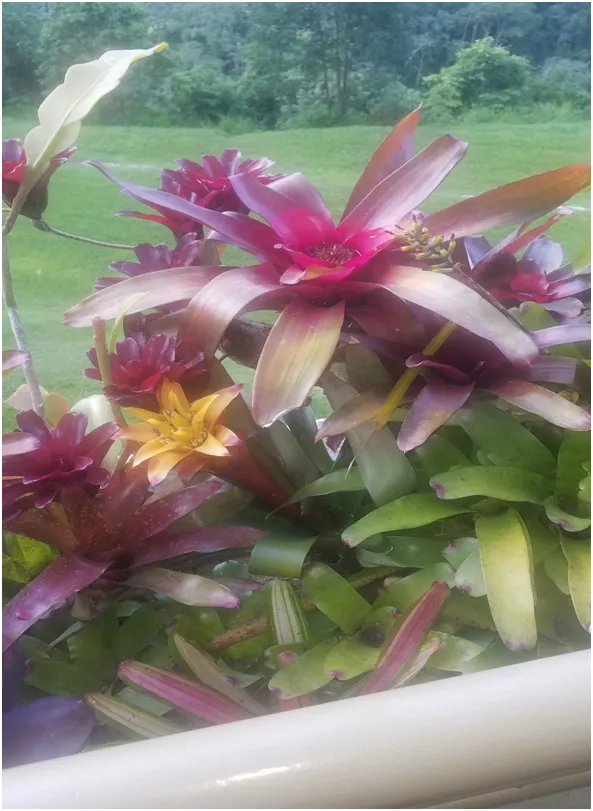
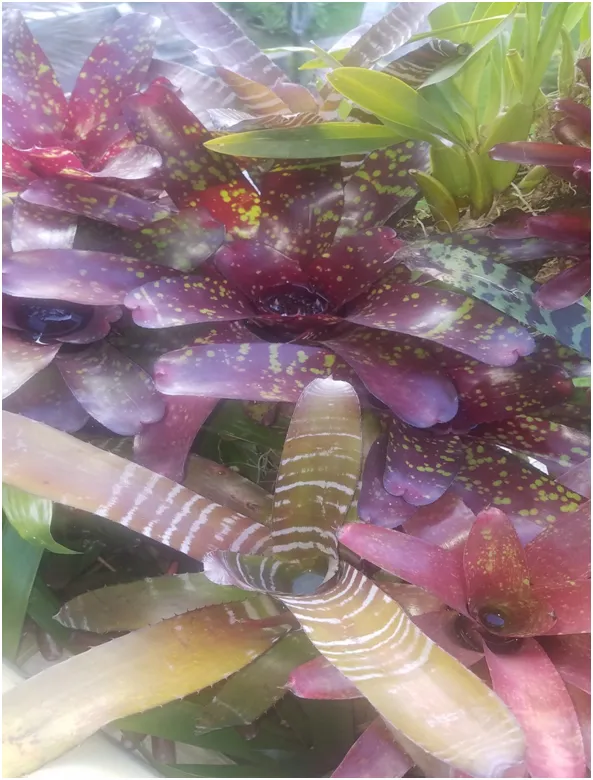
Once the goal of taking the photos was achieved, and in the tranquility of my home, I have decided to write to my valued friends of the HIVE platform, a few lines about bromeliads in Venezuela, and show them the photographs that I have taken, of the varieties that have been born in the gardens of this exquisite house, and fundamentally give you the beauty of this plant that I hope you like.
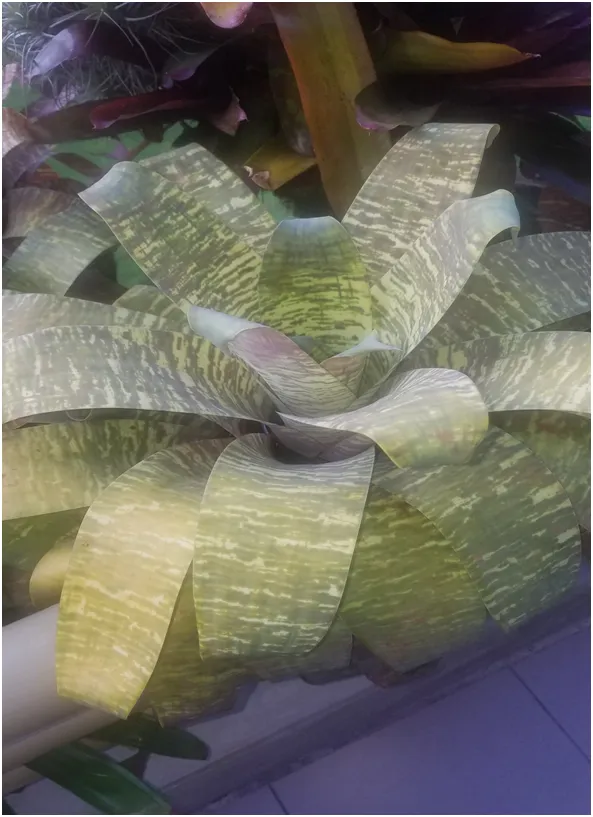
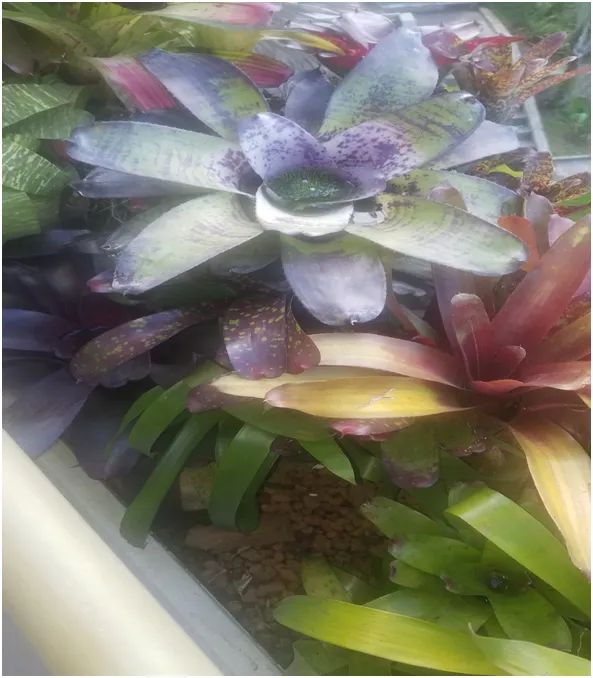
In the world there are about 3000 species of bromeliads, more than half of them being "epiphytes", that is, they grow on other plants or objects using them only as support, without nutritionally parasitizing them. The scientific name for bromeliads is Aechmea aquilega. Brazil has the largest number of species, followed by Mexico and Ecuador, in Venezuela we have approximately 400 species. This plant is classified into 68 genera and 3 subfamilies. Although we can find the Pitcairnia feliciana species in Africa, it is stated that its origin is the American continent, especially in the tropical and subtropical zones of the continent; its species reproduce from the southern United States to northern Argentina and Chile. It is said that it was Christopher Columbus who brought, in 1493, the fruit of the pineapple or "Karatas", a native name of South America, to Queen Isabel the Second.

Bromeliads have been known in Venezuela since 1565, when the English botanist Sir John Hawkins collected, along the coast of the Sucre and Anzoátegui states, the bromeliads that the natives called Mayas or pineapples. Of the almost 400 species that exist in Venezuela, many are endemic to Guayana, where almost 50% of the country's bromeliads are concentrated. Its distribution goes from the Tepuis in Guayana, to the moors of the Andean states, where the genus Tillandsia turns out to be the most numerous of the whole family.


At present, the best known of all bromeliads is the pineapple (“la piña, o ananá”), for its exquisite flavor; The ease way to being cultivated has expanded its planting and consumption in many other parts of our planet, so that people are familiar with the shape of bromeliads, but do not know their extensive variety.
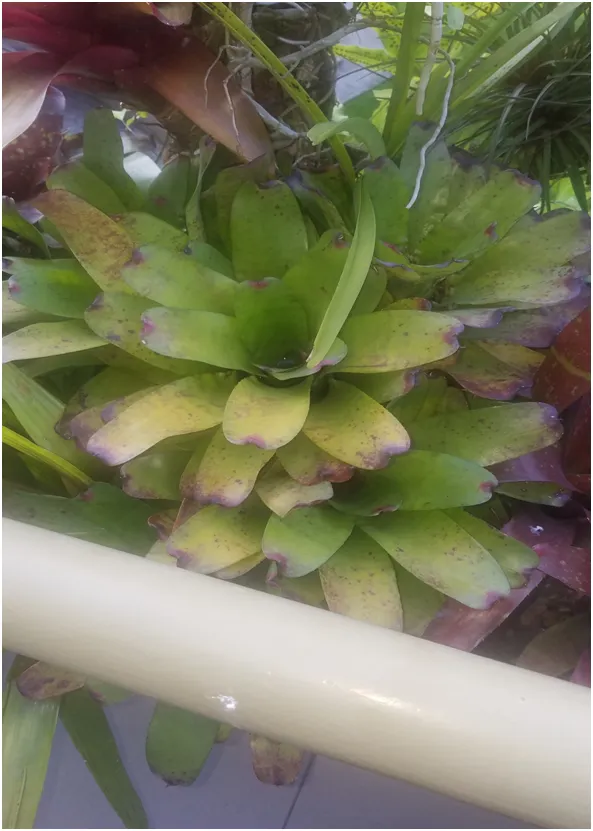
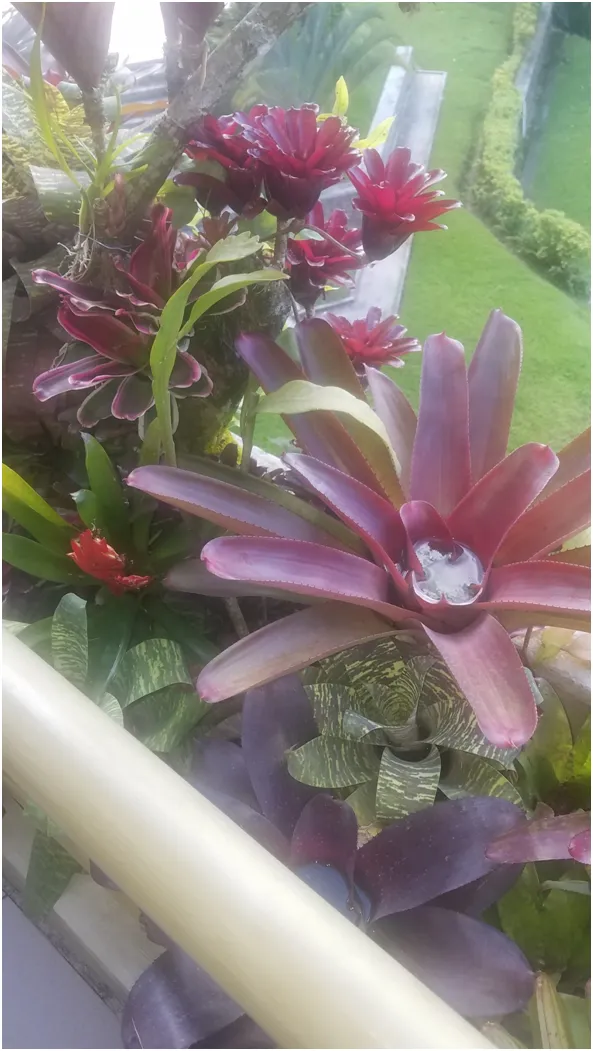
This plant does not require particular conditions, it only needs some conditions of sunlight and humidity for its proper growth; if they do not receive sun, their leaves grow unevenly and if, on the contrary, they are exposed to the sun, they will burn permanently. That is why they deserve the sun, but not too much. However, they can be found near the beaches and up to 4000 meters high.
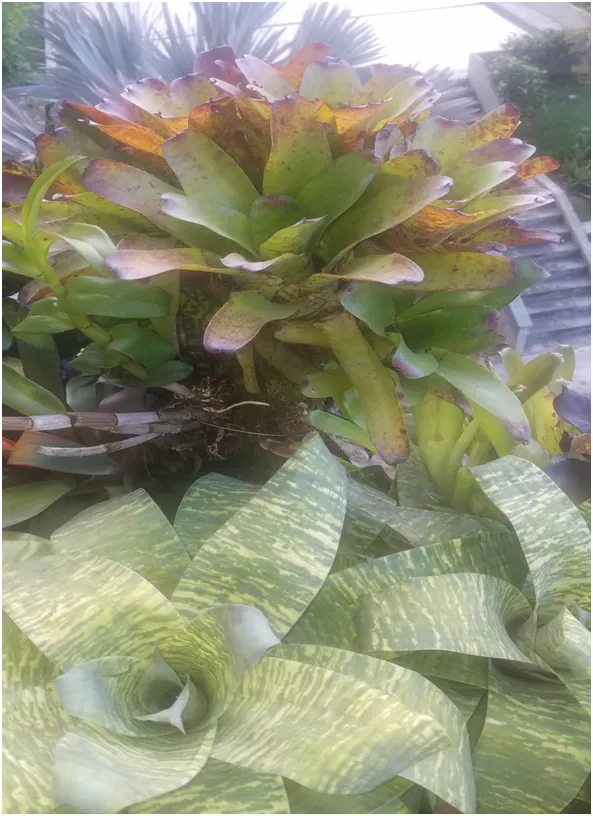

The architect Lorenzo Lija*, a specialist in landscaping, recommends how to plant bromeliads at home. In case they are planted in pots, they should be buried up to the base of the leaves, the pot should not be too large as this will take less time for the bromeliad to develop its root system. He recommends the use of a substrate that allows good drainage, such as decaying chopped fern roots, forest soil, pine bark, rice husk, charcoal, decaying wood, coarse river sand, fiber coconut, dry ground leaves, expanded clay and / or peat. The most commonly used combination is a mixture, in equal parts, of ground coconut fiber, rice shell and peat. *Quoted by Marisol Serrano: http://miremanzodepaz.blogspot.com/p/el-encanto-de-las-bromelias-su-variedad.html
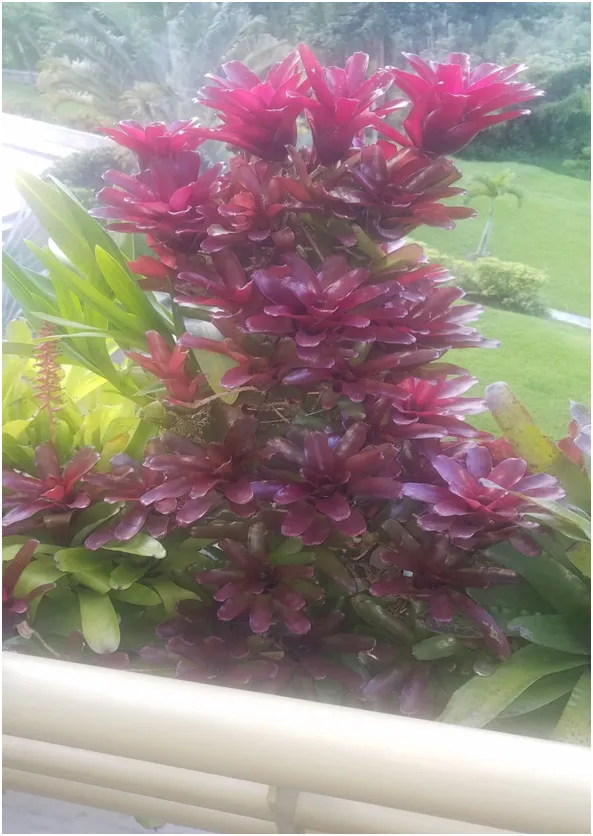
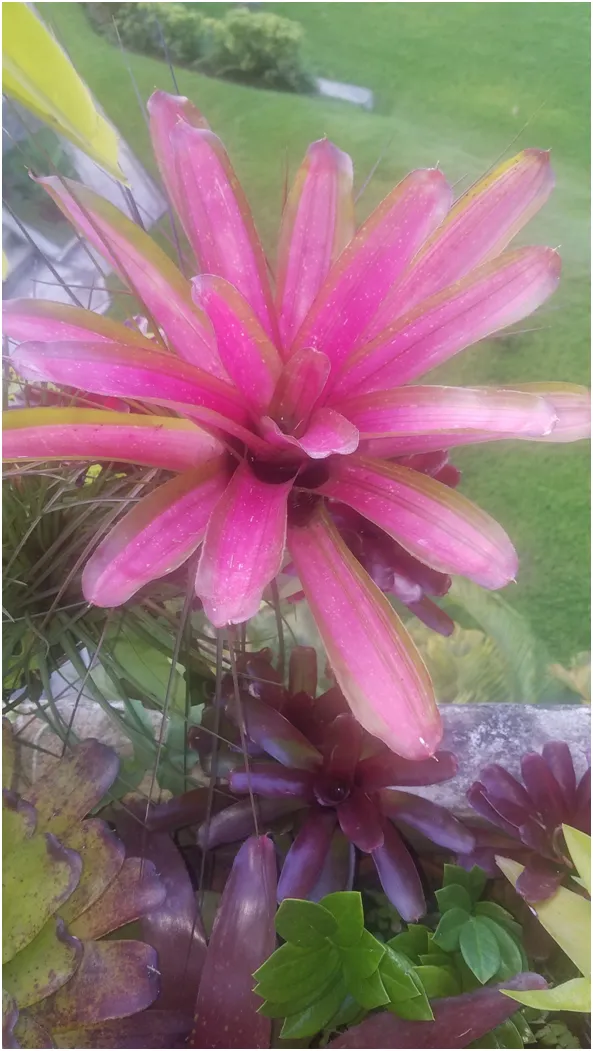
When a bromeliad blooms it is a sight to be seen, since it never blooms more than twice; in fact, once the mother plant blooms for the second time, it dies, although it maintains the species by the offspring it generates and by the seeds dispersed by the birds that feed on them.
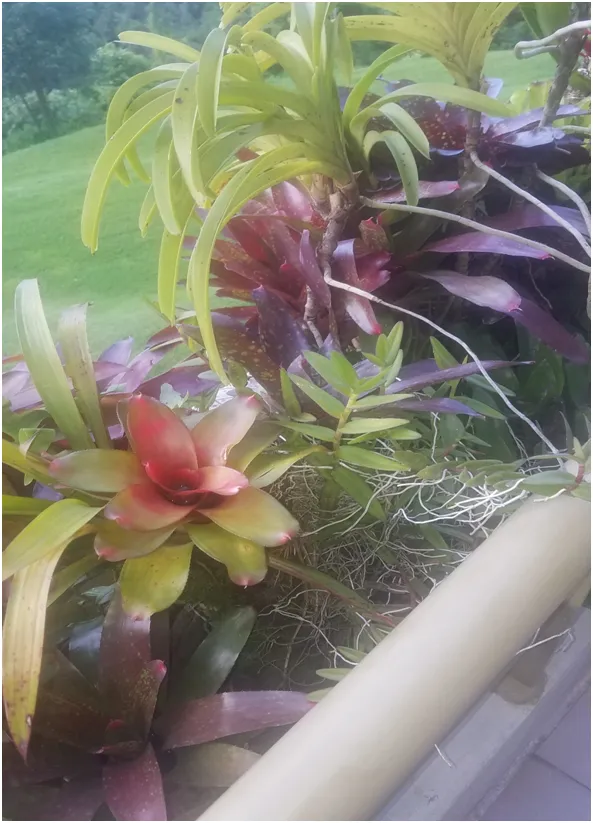

In general, bromeliads are widely used for landscaping due to their showiness and color, which they maintain all year round and not only during flowering.
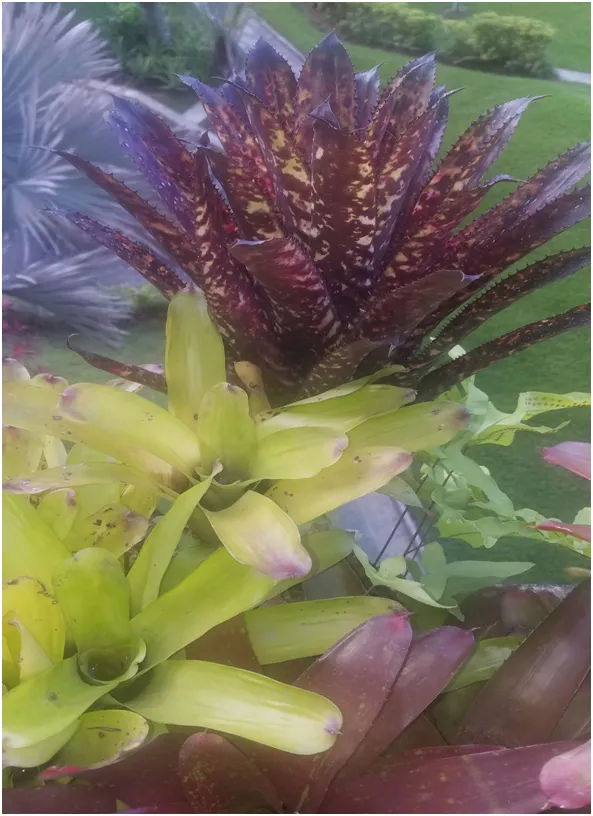
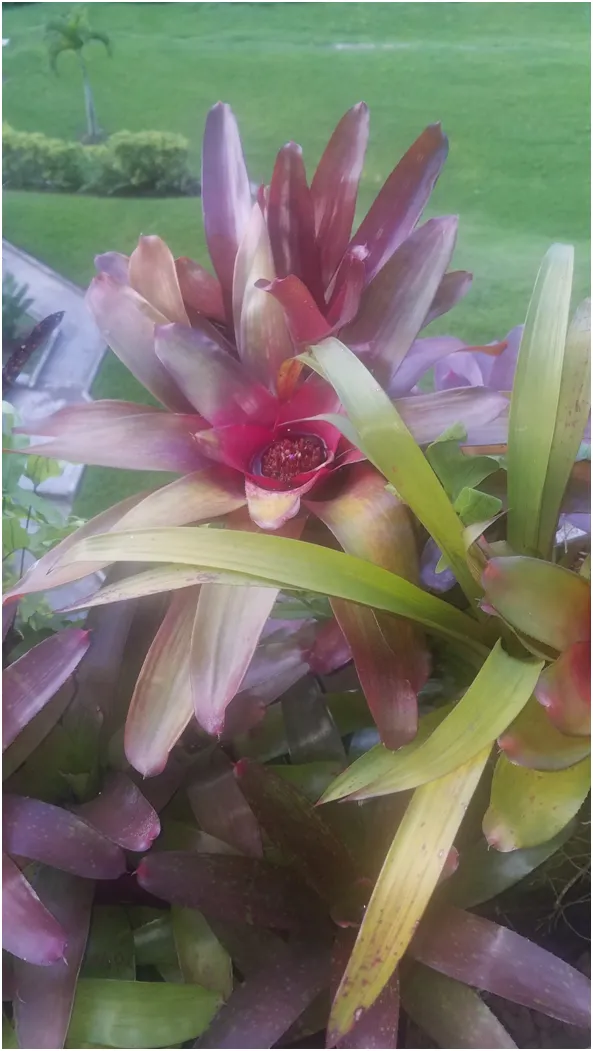
In Venezuela we are fortunate to have, since 2000, a “bromeliario” in the Mérida botanical garden whose scientific collection of bromeliads has about 20 genera, about 120 species and more than 500 individuals, becoming the most important at the level. national and having one of the most complete collection of bromeliads in South America.
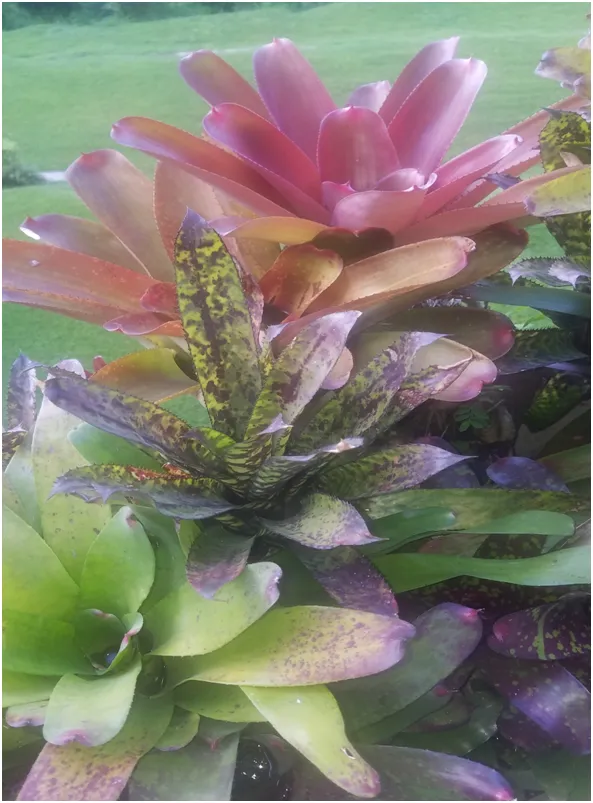
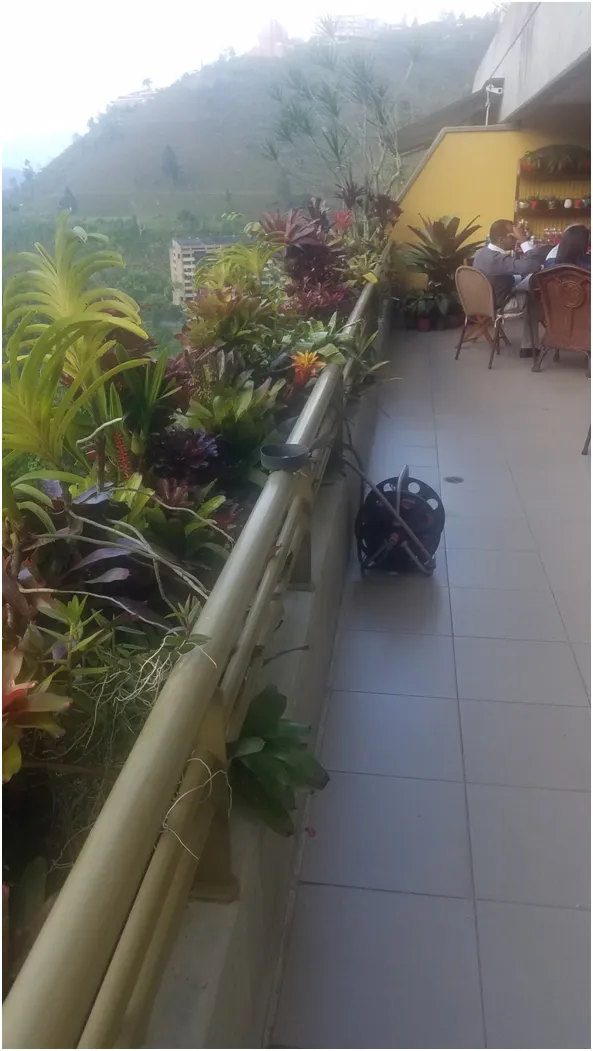
I hope you enjoy as much as I do this sample of bromeliads that have been given in a few square meters in a family home in Caracas-Venezuela. In closing, I want to thank Doris for her generosity in allowing me to take all the photos as I pleased.
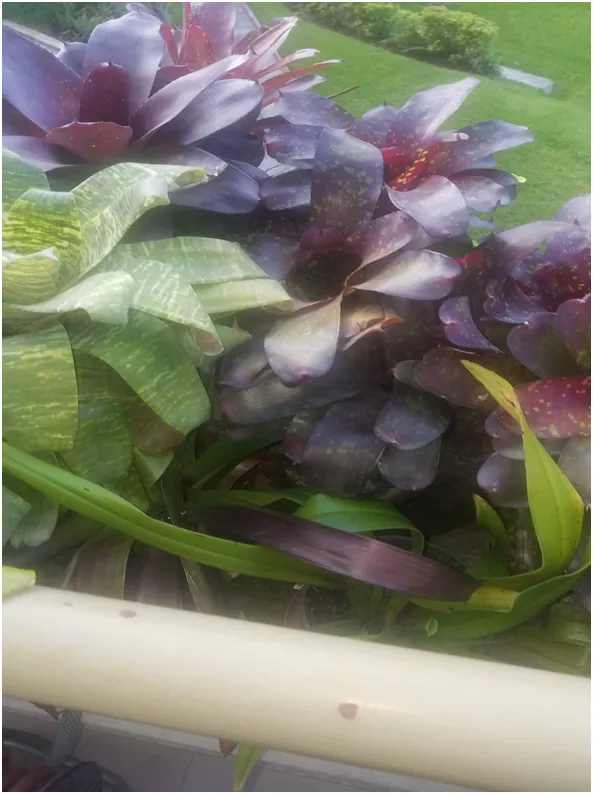
Reference articles:
*Bromelia – aquilega: http://vereda.ula.ve/jardin_botanico/areas-tematicas/bromeliario/bromelia/
*Bromeliario: http://vereda.ula.ve/jardin_botanico/areas-tematicas/bromeliario/
*Marisol Serrano El encanto de las bromelias http://miremanzodepaz.blogspot.com/p/el-encanto-de-las-bromelias-su-variedad.html

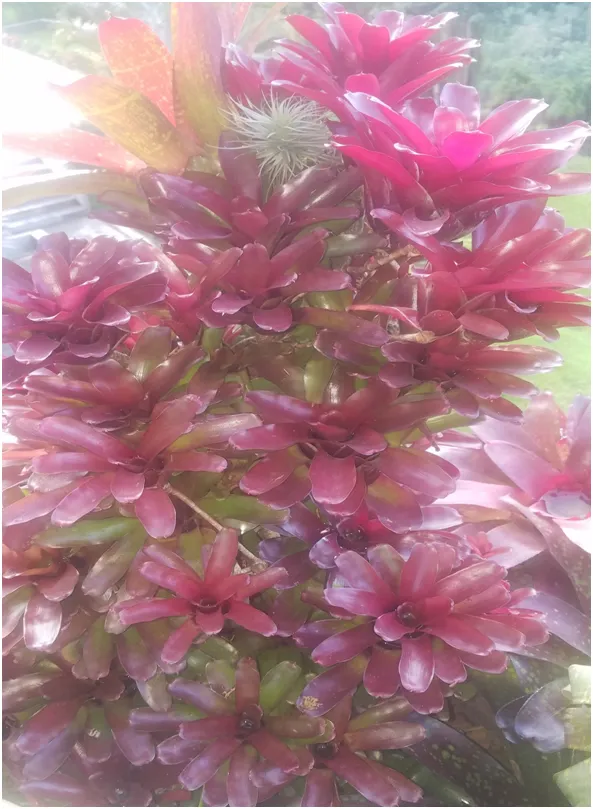
Con motivo de una visita a mis amigos y colegas profesores universitarios jubilados, Doris y Carlos, en su residencia, ubicada en una zona privilegiada por la naturaleza, al sur de la ciudad, me encontré con la gratísima sorpresa de que Doris había plantado y cuidado con esmero una serie de bromelias que atrajeron de inmediato mi atención, por lo que le pedí a mi amiga me permitiera tomarle fotos a la variedad de ese tipo de planta que pulula, conjuntamente con orquideas, en sus jardines y que estaban bajo mi atenta mirada desde que hice entrada en la casa. He de decirles que el terreno sobre el cual está construido el edificio de apartamentos donde viven Doris y Carlos posee una alto grado pluviométrico, con un agradable clima de montaña, lo que facilita el crecimiento de las bromelias.
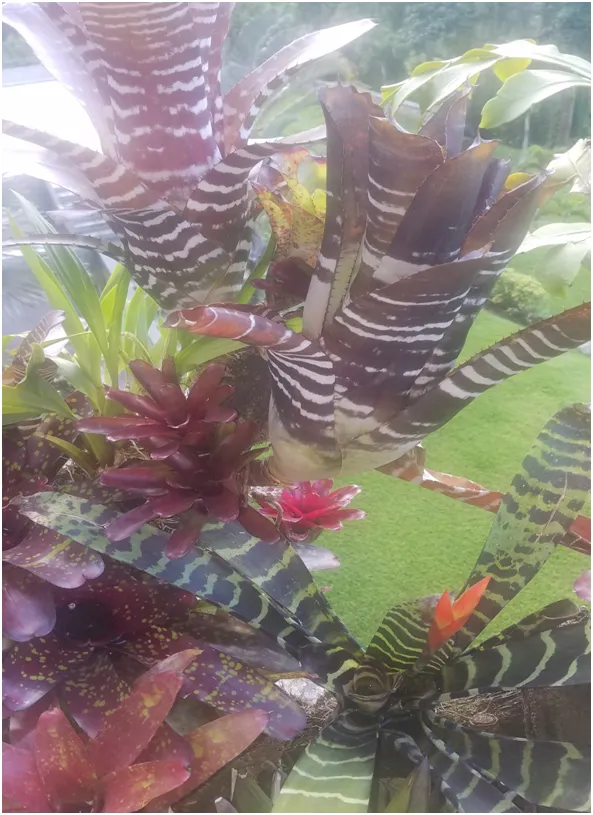
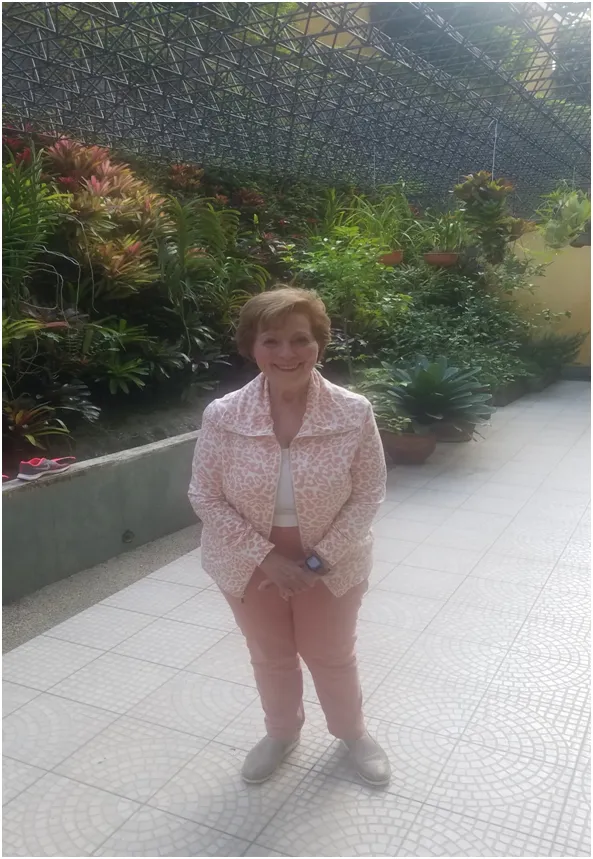
Una vez logrado el objetivo de tomar las fotos, y ya en la tranquilidad de mi hogar, me he dispuesto a escribirle a mis apreciados amigos de la plataforma HIVE, algunas líneas sobre las bromelias en Venezuela, y mostrarles las fotografías que he tomado, de las variedades que han nacido en los jardines de esta exquisita casa, y fundamentalmente regalarles la belleza de esta planta que espero les agrade.
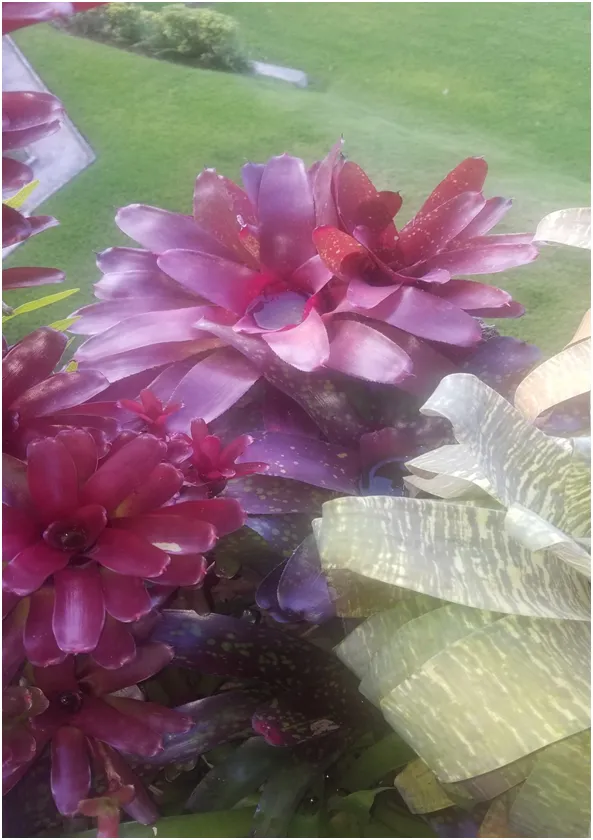

En el mundo existen unas 3000 especies de bromelias, siendo más de la mitad de ellas “epifitas”, es decir, que crecen sobre otras plantas u objetos usándolos solo como soporte, sin parasitarlas nutricionalmente. El nombre científico de las bromelias es Aechmea aquilega. Brasil tiene la mayor cantidad de especies, seguida de México y Ecuador, en Venezuela tenemos aproximadamente unas 400 especies. Esta planta está clasificada en 68 géneros y 3 subfamilias. Aunque podemos encontrar la especie Pitcairnia feliciana en África, se afirma que su origen es el continente americano, especialmente en las zonas tropical y subtropical del continente; sus especies se reproducen desde el sur de los Estados Unidos hasta el norte de Argentina y Chile. Se dice que fue Cristóbal Colón quien llevó, en 1493, el fruto de la piña o “Karatas”, nombre nativo de Sur América, a la reina Isabel Segunda.
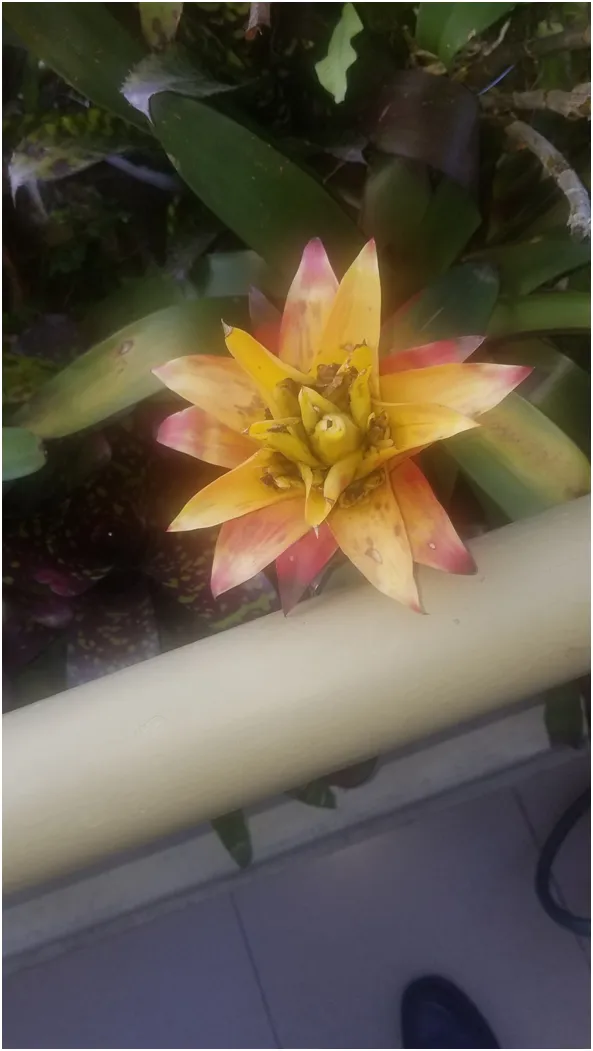
En Venezuela se conoce a las bromelias desde 1565 cuando el botánico Inglés Sir John Hawkins recolectó, por la costa de los estados Sucre y Anzoátegui, las bromelias que los nativos llamaban mayas o piñas. De las casi 400 especies que existen en Venezuela, muchas son endémicas de la Guayana donde se concentra casi el 50% de las bromelias del país. Su distribución va desde los Tepuyes en Guayana, hasta los páramos de los estados andinos, donde el género Tillandsia resulta ser el más numeroso de toda la familia.
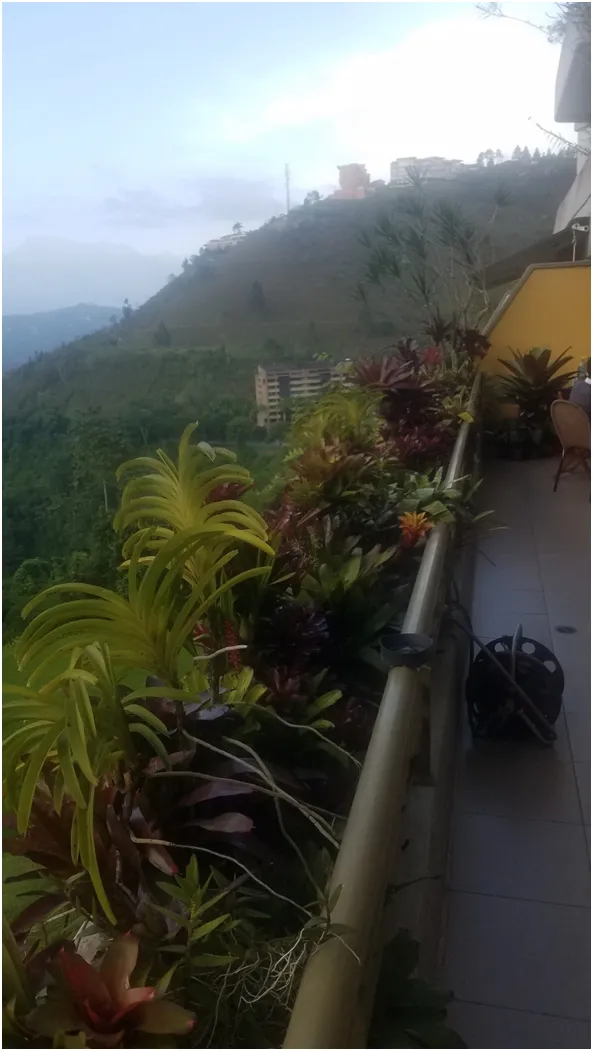
En la actualidad, la más conocida de todas las bromelias es la piña o ananá, por su exquisito sabor; la facilidad para ser cultivada ha expandido su siembra y consumo en muchas otras partes de nuestro planeta, por lo que la gente está familiarizada con la forma de las bromelias, pero no conoce su extensa variedad.

Esta planta no requiere de condiciones particulares, solo necesita de algunas condiciones de luz solar y humedad para su crecimiento adecuado; si no reciben sol sus hojas crecen en forma desigual y si, por el contrario, están expuestas al sol, permanentemente, se queman. Por ello ameritan del sol, pero no en demasía. Empero, se pueden encontrar cercanas a las playas y hasta 4000 metros de altura.

(En este vivero conviven las bromelias y las orquídeas) Foto del autor
El arquitecto Lorenzo Lija*, especialista en paisajismo, recomienda la forma de sembrar bromelias en el hogar. En caso de que se siembren en potes deben enterrarse hasta la base de las hojas, el pote no debe ser demasiado grande pues así le tomará menos tiempo a la bromelia para desarrollar su sistema de raíces. Recomienda el uso de un sustrato que permita un buen drenaje, como, por ejemplo, raíces de helechos picadas en descomposición, tierra de bosques, corteza de pino, cascarilla de arroz, carbón vegetal, madera en descomposición, arena gruesa de río, fibra de coco, hojas secas molidas. Arcilla expandida y/o turba. La combinación más utilizada es una mezcla, en partes iguales, de fibra de coco molida, concha de arroz y turba. *Citado por Marisol Serrano: http://miremanzodepaz.blogspot.com/p/el-encanto-de-las-bromelias-su-variedad.html
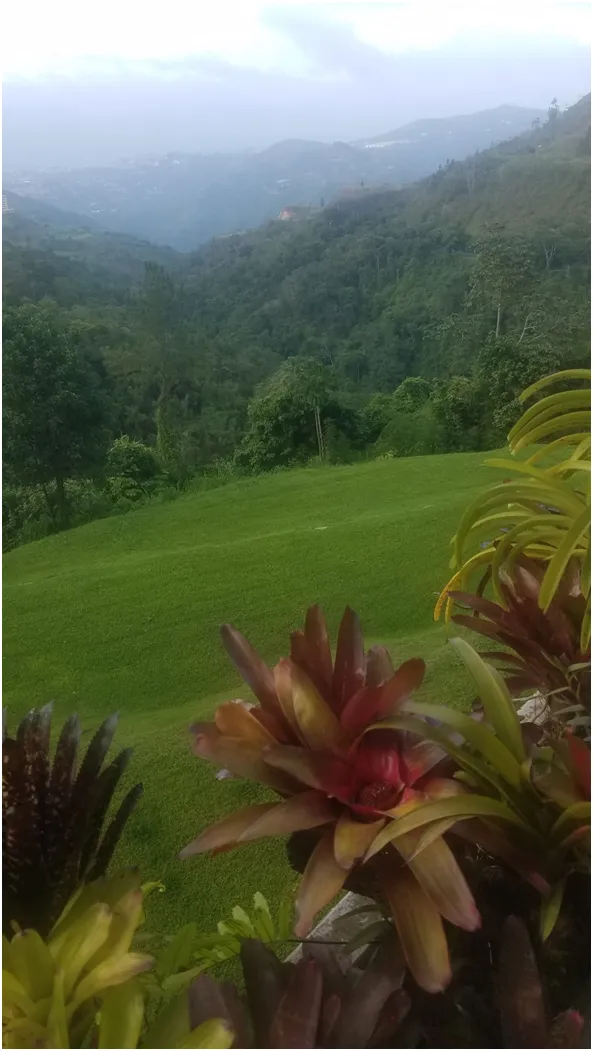
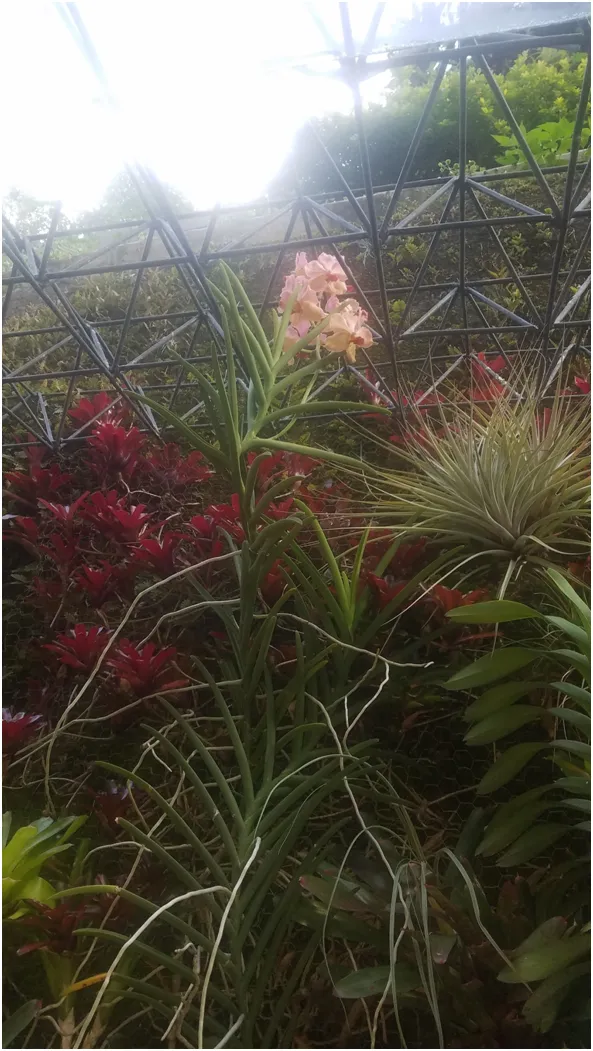
Cuando una bromelia florece es un espectáculo digno de ser presenciado, ya que nunca florece más de dos veces; de hecho, una vez que la planta madre florece, por segunda vez, muere, aunque mantiene la especie por la prole que genera y por las semillas que dispersan los pájaros que se alimentan de ellas.
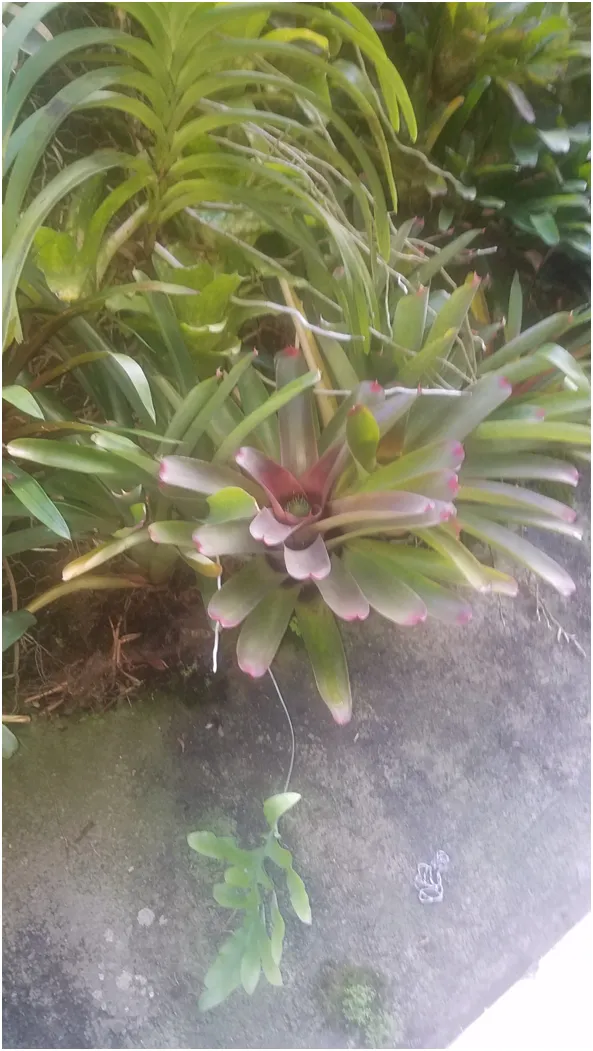
En general, las bromelias son muy utilizadas para paisajismos por su vistosidad y colorido, que mantienen todo el año y no solamente durante la floración

En Venezuela tenemos la suerte de contar, desde el año 2000, con un bromeliario en el jardín botánico de Mérida cuya colección científica de bromeliáceas cuenta con cerca de 20 géneros, unas 120 especies y más de 500 individuos, constituyéndose en el más importante a nivel nacional y poseyendo una de las más completa colección de bromelias de Sudamérica.
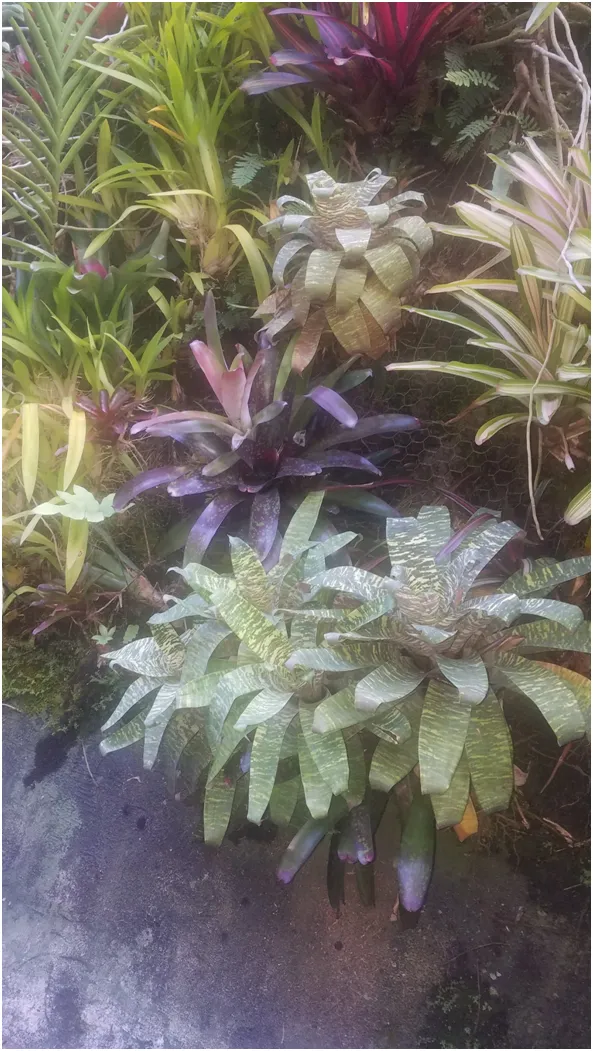
Espero disfruten tanto como yo de esta muestra de bromelias que se han dado en escasos metros cuadrados en una casa de familia en Caracas-Venezuela. Para terminar, quiero agradecer la generosidad de Doris al permitirme tomar todas las fotos a mi real antojo.

Artículos de referencia:
*Bromelia – aquilega: http://vereda.ula.ve/jardin_botanico/areas-tematicas/bromeliario/bromelia/
*Bromeliario: http://vereda.ula.ve/jardin_botanico/areas-tematicas/bromeliario/
*Marisol Serrano: El encanto de las bromelias http://miremanzodepaz.blogspot.com/p/el-encanto-de-las-bromelias-su-variedad.html
